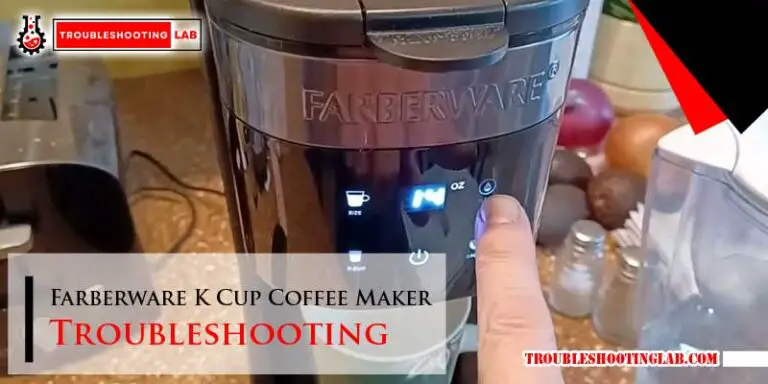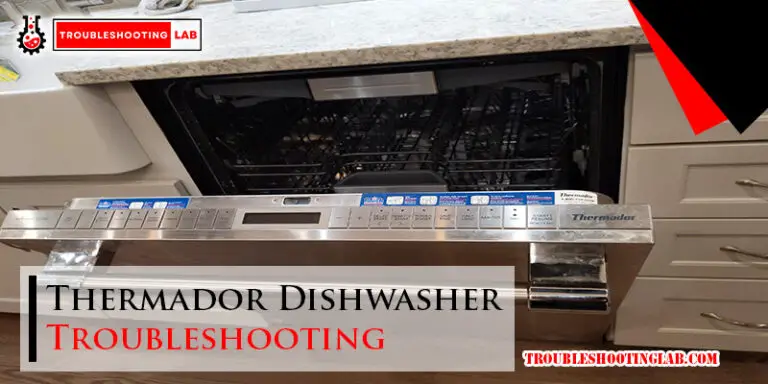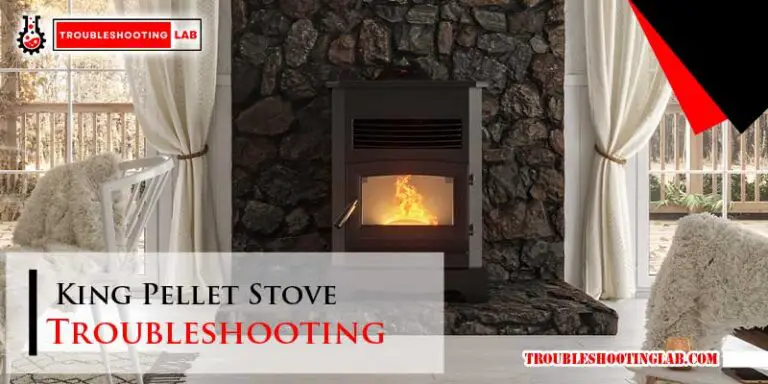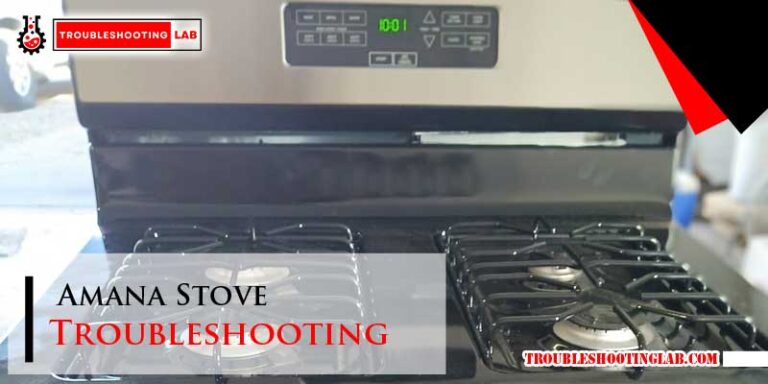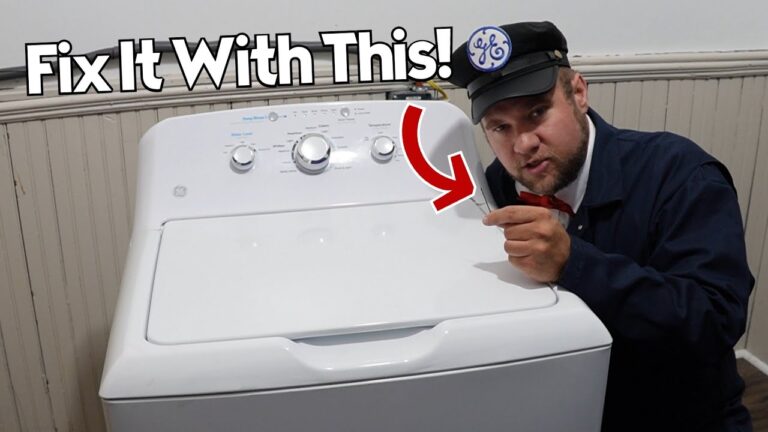Blackstone Grill Troubleshooting: Quick Fixes for Common Issues
Have you ever fired up your Blackstone grill, ready to cook the perfect meal, only to face unexpected issues? Maybe the burners won’t light, the heat isn’t consistent, or your food just isn’t turning out quite right.
It’s frustrating, right? Don’t worry—you’re not alone. These hiccups happen to the best of us, and the good news is, most of them are easy to fix with a little guidance. In this guide, we’ll walk you through common Blackstone grill problems and how to troubleshoot them like a pro.
Whether you’re dealing with uneven cooking, ignition issues, or stubborn grease buildup, we’ve got simple, step-by-step solutions to get your grill back in top shape. Stick with us, and you’ll be back to flipping burgers and searing steaks in no time. Ready to solve your grill troubles once and for all? Let’s dive in!

Credit: www.facebook.com
Common Ignition Problems
Blackstone grills are widely loved for their performance and versatility. But like any grill, they can face ignition problems over time. Understanding these common issues can save you time and effort. Let’s explore some typical ignition problems and their solutions.
Burner Fails To Light
A burner that doesn’t light is a common issue for grill owners. Start by checking the propane tank. Ensure it’s not empty or improperly connected. Inspect the regulator for any signs of damage. Damaged regulators can block gas flow to the burners. Another possible cause is a misaligned burner tube. Make sure it’s properly seated over the valve. If these steps fail, the ignition system itself might need attention.
Weak Or Inconsistent Spark
A weak or inconsistent spark can prevent the burner from igniting. First, inspect the battery in the igniter. Replace it if it’s old or weak. Check the electrode for dirt, grease, or rust. These can block the spark from reaching the gas. Clean the electrode gently with a soft cloth or sandpaper. Ensure the electrode is positioned close enough to the burner. If the spark still seems weak, the igniter module may need replacement.
Clogged Ignition Ports
Clogged ignition ports are another reason your grill might not start. Debris, grease, or food particles can block the ports over time. Use a soft brush to clean the ignition ports regularly. Avoid using sharp objects that could damage the components. After cleaning, ensure the ports are aligned correctly with the burner. Regular maintenance can prevent this issue and improve your grill’s performance.

Credit: www.youtube.com
Uneven Heating Issues
Uneven heating can ruin your cooking experience on a Blackstone grill. Hot and cold spots make it difficult to achieve consistent results. Understanding the causes of uneven heating can help you fix the problem. Here are some common reasons for uneven heating and ways to address them.
Hot And Cold Spots
Hot and cold spots occur when the heat distribution is not uniform. This can happen if the griddle is not level. Ensure the grill is on a flat surface to avoid this issue. Cleaning the griddle surface regularly can also improve heat distribution. Old grease or debris can block even heating.
Preheating the grill correctly is another important step. Allow the burners to heat evenly before placing food on the griddle. This ensures a consistent cooking temperature across the surface.
Blocked Burner Tubes
Blocked burner tubes can lead to uneven heating. Dirt, grease, or food particles can clog the burners. Clean the tubes regularly to keep them clear. Use a soft brush or compressed air to remove debris. Avoid using sharp objects that can damage the burners.
If cleaning doesn’t solve the issue, inspect the burners for damage. Cracks or wear can affect their performance. Replace damaged burners to restore proper heat flow.
Wind Interference
Wind interference can cause uneven heating, especially during outdoor cooking. Strong winds can cool down certain areas of the griddle. Use a wind guard or shield to block the wind. Position the grill in a sheltered area for better heat control.
Cooking on low heat during windy conditions can worsen the problem. Increase the heat slightly to maintain consistent cooking temperatures. Monitor the griddle closely to avoid overcooking.
Gas Flow Problems
Gas flow problems are common issues with Blackstone grills. These problems can affect performance and cooking results. They typically arise due to blockages, faulty components, or improper connections. Diagnosing gas flow issues early can save time and prevent further damage. Below, we’ll explore specific causes and fixes for gas flow problems.
Low Flame Output
A low flame often indicates restricted gas flow. This can happen due to clogged burner ports. Grease, dirt, or debris may block the openings. Clean the burners gently with a soft brush to clear any obstructions. Check the control knobs to ensure they’re fully open. Sometimes, the low flame is caused by a safety feature in the regulator. Reset the regulator by turning off the gas and disconnecting the propane tank. Wait a few minutes, reconnect, and test again.
Regulator Malfunctions
The regulator controls gas pressure from the tank to the grill. A faulty regulator can reduce or stop gas flow. Inspect the regulator for visible damage or wear. If the grill produces uneven flames, the regulator might need replacement. Make sure the regulator is tightly connected to the propane tank. Loose connections can cause leaks or pressure issues. Replace the regulator if it shows signs of damage or fails to reset.
Propane Tank Issues
Problems with the propane tank can disrupt gas flow. Ensure the tank is not empty before troubleshooting. Inspect the valve for any visible damage or leaks. Leaks can cause reduced gas flow or safety hazards. Use soapy water to check for bubbles around the valve. If bubbles appear, the valve may be leaking and needs repair. Also, confirm the tank is properly connected to the grill. Loose or misaligned connections can restrict gas flow.
Griddle Surface Troubles
Griddles are the heart of a Blackstone grill, but they’re not immune to issues. From sticky surfaces to rust spots and warped plates, problems can pop up unexpectedly. The good news? Most of these griddle troubles are fixable with a little care and attention.
Sticky Cooking Surface
A sticky cooking surface is one of the most common challenges. It often happens when cooking oils and food particles build up over time, forming a tacky residue. Skipping regular cleaning after each use only makes the problem worse.
Here’s what you can do: After cooking, let your griddle cool slightly, but don’t wait too long. Use a griddle scraper to remove food bits, followed by a wipe-down with a damp cloth. If the stickiness persists, heat the griddle and apply water to create steam. Scrape again, and once it’s clean, season the surface with a thin layer of oil. This creates a protective barrier for your next use.
Are you using too much oil while cooking? A heavy hand with oil can cause stickiness. Stick to a light coating to avoid buildup.
Rust Development
Rust is the enemy of any griddle, but it’s especially frustrating when you notice it on your Blackstone. Humidity, rain, or improper cleaning can all lead to rust forming on the surface.
To fix rust, grab a grill stone or some steel wool. Scrub the rusty areas gently until the metal underneath is visible. Wipe away the debris, then re-season your griddle by heating it and applying a thin layer of oil.
Want to prevent rust entirely? Keep your griddle dry and covered when not in use. Store it indoors if possible, especially in rainy or humid climates. A griddle cover is a small investment that can save you hours of cleaning later.
Warped Griddle Plate
A warped griddle plate can mess with your cooking game. Uneven heat distribution makes it tough to cook your food evenly. Warping often happens when the griddle is exposed to extreme temperature changes, like pouring cold water on a hot surface.
If your griddle is already warped, press it back into shape using gentle pressure (if possible) or consult Blackstone’s support for replacement options. For future use, avoid shocking the metal. Allow your griddle to cool naturally before cleaning it with water.
Do you preheat your griddle gradually? Ramping up the heat too quickly can stress the metal and lead to warping. Always start with a low flame and increase it slowly to keep your griddle in good shape.
Griddle surface troubles don’t have to ruin your grilling experience. A little maintenance and a few good habits can keep your Blackstone running like new. Which of these issues have you faced, and how did you tackle them?
Excessive Smoke During Cooking
Have you ever fired up your Blackstone grill, only to find yourself surrounded by a cloud of smoke? It’s frustrating, right? Excessive smoke can ruin your cooking experience and leave your food tasting off. Luckily, this issue isn’t hard to fix once you understand what’s causing it. Let’s break down the common culprits and get your grill back to producing perfect meals.
Oil Residue Build-up
Old oil residue is a sneaky troublemaker. Over time, leftover oil from previous grilling sessions can stick to the surface and create smoke when heated.
To tackle this, scrape off any built-up residue after every cook. Use a grill scraper or spatula while the griddle is still warm—it’s easier to remove stuck-on grease.
If you don’t clean regularly, this residue can also affect the flavor of your food. Don’t skip this step; your taste buds will thank you.
High Cooking Temperatures
Cranking up the heat might seem like a great idea for quick cooking, but it can backfire. High temperatures cause oils to burn faster, leading to excessive smoke.
Try lowering the heat slightly, especially when cooking foods that don’t require extreme temperatures, like vegetables or pancakes. You’ll notice less smoke and better control over your cooking.
Remember, the Blackstone grill heats evenly, so there’s no need to go overboard with the flame. Your food will cook just fine without all the smoke.
Improper Cleaning Techniques
Are you cleaning your grill the right way? Improper methods can leave behind residue or even damage the surface, contributing to smoke issues.
After each cooking session, wipe down the griddle with a paper towel or cloth. Avoid using soap, as it can create buildup when heated later.
If there’s stuck-on debris, pour some warm water over it and scrape gently. Proper cleaning keeps your grill running smoothly and smoke-free.
What’s your go-to method for dealing with grill smoke? Share your tips below!
Knob And Control Issues
Knob and control issues can disrupt your Blackstone grill’s performance. These problems might seem minor, but they can affect cooking precision. Understanding and resolving them ensures your grill works smoothly. Let’s explore common knob and control issues and how to fix them.
Loose Or Stuck Knobs
Loose or stuck knobs are common and frustrating. A loose knob may slip while adjusting, making temperature control hard. To fix this, check the knob’s connection to the control valve. Tighten it gently if it’s loose. For stuck knobs, debris or grease buildup might be the issue. Clean around the knob and shaft using a soft brush and warm soapy water. Avoid using excessive force to prevent damage.
Temperature Control Problems
Temperature control issues occur if knobs don’t regulate heat properly. This can lead to uneven cooking or burnt food. First, inspect the control knob for damage or wear. If it’s intact, the issue might be in the control valve. Ensure the valve is clean and free of blockages. If cleaning doesn’t help, the valve may need replacement. Check your grill’s manual for replacement instructions.
Damaged Control Valves
Damaged control valves can make your grill unusable. Signs of damage include gas leaks or unresponsive temperature controls. Inspect the valve for cracks, rust, or other visible damage. If damaged, it must be replaced immediately. Using a damaged valve can be unsafe. Always use manufacturer-approved parts for replacements to ensure compatibility and safety.
Maintenance Tips For Prevention
Maintaining your Blackstone grill can save you from common troubleshooting issues. A well-kept griddle performs better and lasts longer. Prevention begins with consistent care and attention to detail. Following a few simple maintenance tips can make a big difference in performance.
Regular Cleaning Routine
Clean the griddle after every use to prevent food buildup. Scrape off food debris while the surface is still warm. Use warm water and a mild scrubber to wipe away grease. Avoid harsh chemicals that might damage the cooking surface. Dry the griddle thoroughly to prevent rust formation.
Seasoning The Griddle
Season the griddle regularly to maintain its non-stick surface. Apply a thin layer of cooking oil after each use. Heat the griddle until the oil begins to smoke, then let it cool. Repeat this process every few uses for optimal results. Proper seasoning protects the griddle from rust and enhances flavor.
Proper Storage Practices
Store the grill in a dry, covered area to avoid moisture damage. Use a weather-resistant cover to protect it from dust and humidity. Keep the griddle indoors during extreme weather conditions. Ensure the grill is fully dry before storing to prevent rust or mold.

Credit: www.youtube.com
Conclusion
Troubleshooting your Blackstone grill doesn’t have to feel overwhelming. With patience and the right steps, most issues can be fixed easily. Regular maintenance helps avoid common problems and keeps your grill running smoothly. Always check connections, clean surfaces, and follow the manual for guidance.
Small adjustments often solve big headaches. Stay consistent with care, and your grilling experience will remain enjoyable. If problems persist, professional help is a smart option. A well-maintained grill brings flavorful meals and happy moments. Keep grilling simple, safe, and stress-free!


